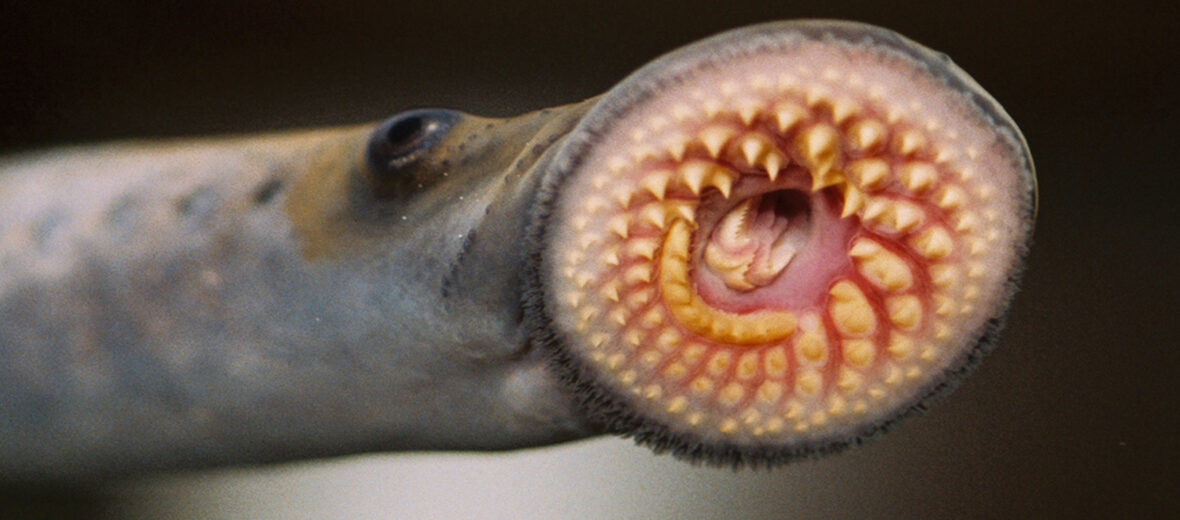
Native to both fresh and salt water ecosystems, the lamprey is an invasive parasite that is capable of upsetting populations of fish in oceans, lakes, and rivers. During the 1940s a sharp increase in lampreys threatened and endangered a large number of commercial fisheries in the the Great Lakes because of their hematophagous (feeding on the blood of other animals) feeding methods.
First the Stats…
Scientific name: Petromyzontiformes
Weight: Up to 9.7 ounces
Length: Up to 47 inches
Lifespan: Up to 6 years
Now on to the Facts!
1.) With there Sharp teeth and rasping tongue, they latch on to their victims and induce blood flow to the wound. They also suck out other vital bodily fluids.
2.) Their primary prey of choice is catfish, salmon, sharks, chub, and trout. They will also feed on invertebrates.
3.) These creatures have the ability to extensively regenerate appendages and bodily fluids. If a lamprey’s spinal cord becomes completely severed, they can recover with full mobility in 10 – 12 week’s time.
4.) A single lamprey has the capability to kill over 40 lbs. of fish in its life.
5.) Do to the destruction caused by lampreys in the 1940s, wildlife services have come up with anti lamprey methods such as: Lampricide (a non-toxic pesticide designed to kill lamprey larvae), lamprey sterilization, and pheromone communication.
But wait, there’s more on the lamprey!
6.) In the 1940s 15 million lbs. of lake trout could be harvested per year from the Great Lakes. However, after the lamprey invasion, this number plummeted and by the 1960s only 300,000 lbs. were harvested.
7.) Sea lampreys spend up to 10 years in fresh water. After which they migrate to the open ocean, where it stays for about 2 years. Once mature the sea lamprey will become mature and returns back to fresh water for spawning.
Did you know…?
Lamprey meat is considered a delicacy in Portugal, Spain, Asia, and Alaska. The market value for live lamprey is around $25 per lbs.
8.) Lampreys have changed little in over 360 million years.
9.) Some of the lamprey’s genomes are linked to human neurological disorders. Hence, scientists have been studying the lamprey to come up with cures or treatments for Alzheimer’s, and Parkinson’s diseases, as well as spinal cord injuries.
10.) They have no known predators. So this is one reason they can flourish so easily.
But wait, there’s even more on the lamprey!
11.) Sea lampreys find their way to freshwater riverbeds for breeding in spring. The females will lay between 35,000 – 100,000 eggs, that the males fertilize externally. After fertilization, the eggs are hidden in shallow nests in riverbeds.
12.) The adults die shortly after reproducing, due to a lethal fungus that invades their bodies because of the deterioration of their digestive tract, which happens to make room for their reproductive system.
Now a Short Lamprey Video!
Also, check out the Critter Science YouTube channel. Videos added frequently!
Want to suggest a critter for me to write about? Let me know here.




Leave a Reply